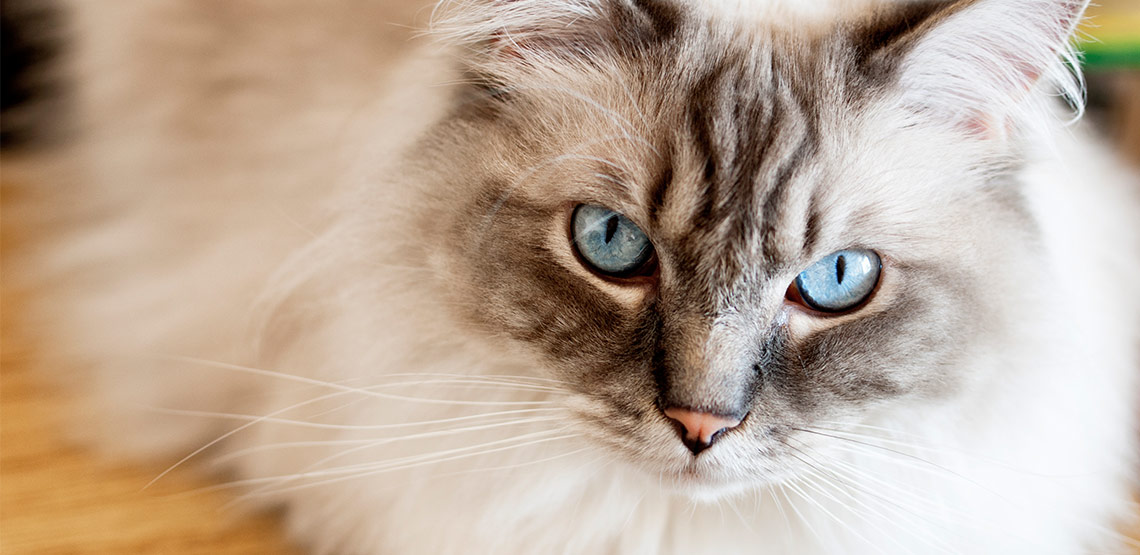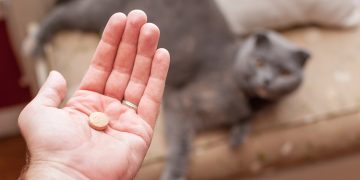A Guide to Ragdoll Cats
The ragdoll cat breed originated in the United States in the 1960s. More affectionate than most cats and well-known for their docility and peaceful temperament, ragdoll cats come with three basic coat patterns: pointed, mitted and bicolor. Cats of the pointed variety display a single- or multi-colored coat with no white; mitted cats feature white paws, a white stomach and a white chin; and bicolor cats have white socks on their legs and a white V-pattern on their faces.
History
Ann Baker, a California-based Persian cat breeder, developed the ragdoll cat breed by crossing a hardy, well-built semi-feral Persian/Angora female with a Burmese male. Baker screened the resulting litter of ragdoll kittens for animals with the desired physical characteristics and continued to build the breed's gene pool. Today, all pure ragdoll cats can trace their ancestry back to Ms. Baker's efforts.
Appearance
Size: Like the Maine coon, the ragdoll is at the large end of the feline size spectrum. Adult females average 10 to 15 pounds, and males weigh in at 15 to 20 pounds.
Coat: The coat of a ragdoll cat is medium in length, glossy and soft. Many people have compared it to rabbit fur. The half-dozen "official" coat colors include blue, cream, lilac, chocolate, flame and seal.
Eyes & Ears: Ragdoll kittens should have blue, blue-green or green-copper eyes. Ears are proportional, triangular and pointed.
Tail: This breed has a thick tail lined with fluffy, voluminous fur. White fur usually lines the tail's underside.
You May Also Like:
Related Search Topics (Ads):
Disposition
Gentle and laid-back, ragdoll cats often follow their owners around the house and aren't nearly as aloof as many other breeds. They love to play, and this is one of the few cat breeds that will learn and perform tricks. For this reason, ragdolls are sometimes called "puppy cats," as they exhibit some canine-like behaviors.
Health and Care
Feeding: To give a ragdoll cat the full, silky, luxurious coat the breed is famous for, it's essential to feed it right. Choose high-quality cat food loaded with nutrients, or make homemade food from leftovers.
Grooming: These cats are squeaky clean and rarely require bathing. When they do, they tend to put up with water better than most other cat breeds. They shed minimally and require, at most, a weekly brushing to remove dead fur.
Activity Level: The ragdoll breed is less active than most other cats and doesn't tend to wander outdoors. While these cats usually get enough exercise roaming around the house, take care not to overfeed them to prevent unhealthy weight gain.
Health Problems: Some ragdoll breeders contend that these cats shouldn't be given live vaccines, as they can react badly to them. Otherwise, they're quite healthy, suffering only from typical ailments that all cats are prone to as they age. These include feline worms and feline diabetes.
Average Lifespan: Ragdoll cats generally live 15 to 25 years.
Find Ragdoll Kittens for Sale
Look for ragdoll kittens for sale from reputable breeders who certify the health of the kittens they sell and include registration papers that guarantee the cat's pedigree. Ragdoll cat breeders generally charge between $400 and $600 for a purebred, authentic ragdoll kitten. Kittens with highly desirable pedigrees may run into the thousands of dollars. If you choose to save some money by taking home an adult cat from a ragdoll rescue center, keep in mind that there will probably be no way to verify its authenticity.

